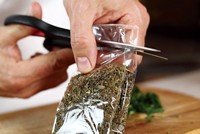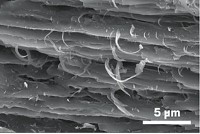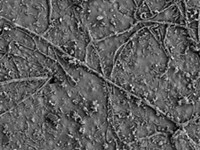Advertisement
Grab your lab coat. Let's get started
Welcome!
Welcome!
Create an account below to get 6 C&EN articles per month, receive newsletters and more - all free.
It seems this is your first time logging in online. Please enter the following information to continue.
As an ACS member you automatically get access to this site. All we need is few more details to create your reading experience.
Not you? Sign in with a different account.
Not you? Sign in with a different account.
ERROR 1
ERROR 1
ERROR 2
ERROR 2
ERROR 2
ERROR 2
ERROR 2
Password and Confirm password must match.
If you have an ACS member number, please enter it here so we can link this account to your membership. (optional)
ERROR 2
ACS values your privacy. By submitting your information, you are gaining access to C&EN and subscribing to our weekly newsletter. We use the information you provide to make your reading experience better, and we will never sell your data to third party members.
Biologics
Pantry Pests Harbor Plastic-Chomping Bacteria
Plastic Pollution: Microbes in the guts of grain-eating moth larvae might speed biodegradation of polyethylene
by Janet Pelley
December 3, 2014

Polyethylene is one of the most popular and, unfortunately, persistent types of plastics. Bags, bottles, and packaging made from the polymer accumulate in landfills and oceans across the globe. Scientists lament that microbes can’t chew up the plastic to render it harmless. However, a new study reports the first definitive molecular evidence that certain bacteria, found in the guts of a common pantry pest, can thrive on polyethylene and break it apart (Environ. Sci. Technol. 2014, DOI: 10.1021/es504038a).
In the U.S. alone, consumers discard over 32 million tons of plastic each year, only 9% of which is recycled. Worldwide, plastic trash ensnares wildlife and picks up toxic pollutants that get ingested by marine birds and fish when they mistake small bits of plastic for food. “Polyethylene is the most common plastic and contributes to a severe environmental problem,” says Jun Yang, an environmental engineer at Beihang University, in China, and lead researcher of the new study. The polymer, he says, resists degradation by microbes because it is highly hydrophobic, has a high molecular weight that prevents it from entering bacterial cells, and has a stable structure consisting solely of C–C and C–H bonds.
Previous studies have reported bacteria that can reduce the weight of polyethylene by more than 20% in just six weeks. But these promising reports failed to provide comprehensive molecular evidence of biodegradation such as signs of oxidation of the polymer chains. And other teams couldn’t replicate these studies because the original authors neglected to register the microorganisms with an international depository, Yang says.
Yang’s team discovered their plastic-munching microbes by accident. One day, Yang was inspecting bags of millet in his kitchen and found them riddled with tiny holes. “I observed moths flying out of the bags and their larvae crawling around inside,” he says. He began to think that the larvae of Plodia interpunctella, a tiny grain-eating moth found in kitchens worldwide, might be digesting the plastic film with the help of bacteria in their guts.
So Yang and his team extracted gut bacteria from the moth larvae and discovered one Bacillus and one Enterobacter species that grew vigorously on polyethylene as their only source of carbon. The researchers incubated the isolated species on small sheets of polyethylene. After 28 days, the sheets showed signs of degradation: Their tensile strength dropped by 50%, and their ability to repel water droplets fell by 30%. And after the microbes grew on the polyethylene for 60 days, the mass of the plastic films decreased by 10%, and the molecular weights of the polymer chains dropped by 13%.
When the scientists examined the digested sheets using scanning electron and atomic force microscopes, they saw that the bacteria had excavated 0.4-µm-deep pits on the plastic film. Using X-ray photoelectron spectroscopy and Fourier transform infrared imaging, the team found carbonyl groups at the tail ends of the polymer chains. This suggests that the microbes clipped the polyethylene chains by oxidizing them.
Finally, the researchers deposited DNA sequences of the two bacteria in GenBank, an international DNA databank hosted by the National Institutes of Health.
“Yang and his team are the first to provide detailed chemical evidence of bacterial degradation” of polyethylene, says Kenneth H. Nealson, an environmental microbiologist at the University of Southern California. “It has been nearly impossible to find an efficient way to degrade plastic,” he says.
The discovery opens the door to identifying more plastic-degrading microorganisms in other insects, and creates opportunities to investigate how the chemical and biological properties of insect guts might boost the metabolism of plastics, Nealson says.





Join the conversation
Contact the reporter
Submit a Letter to the Editor for publication
Engage with us on Twitter